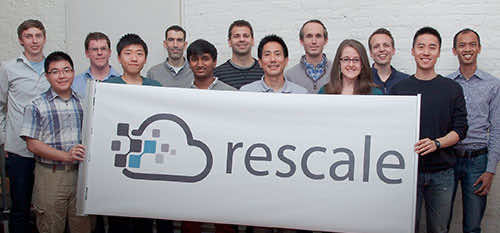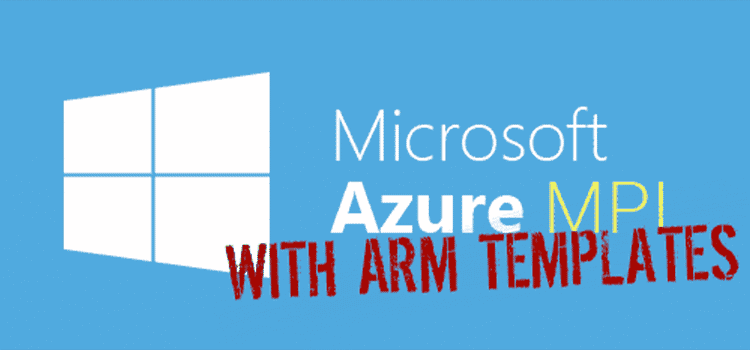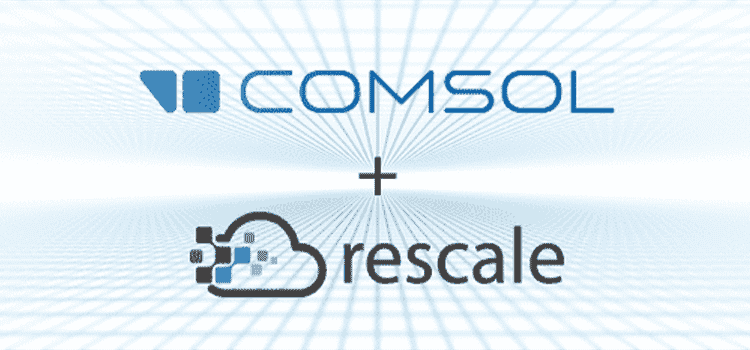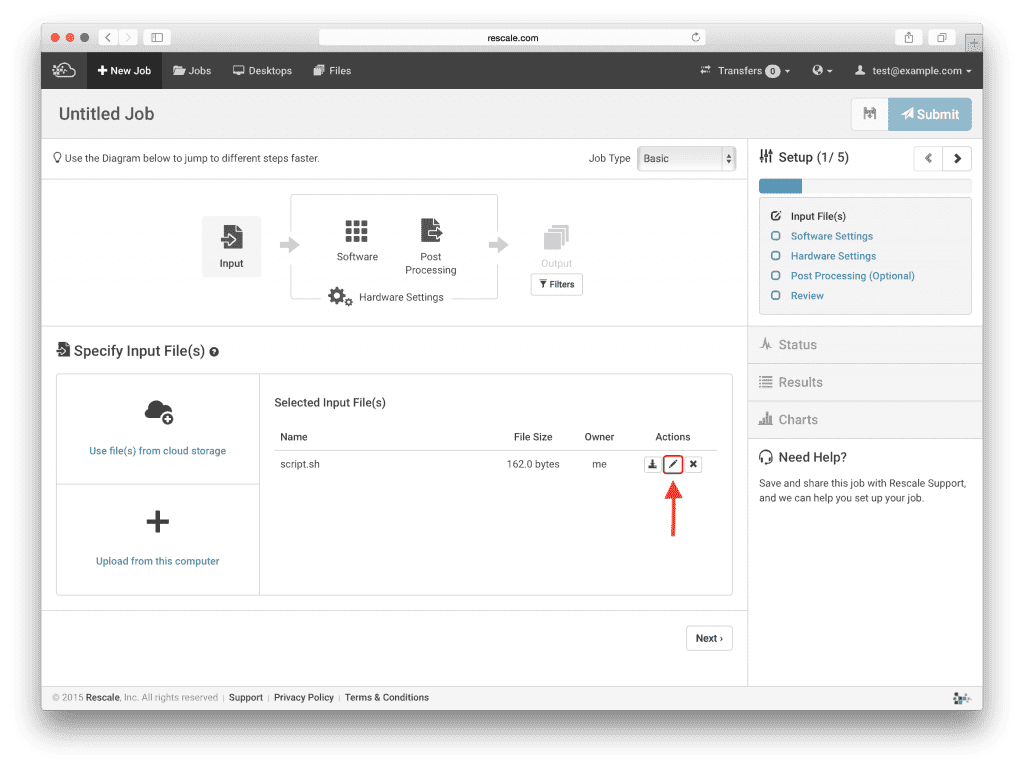The End of the On-Premise HPC

For a CIO, the ultimate goal is creating a lean and agile IT structure that both meets the current and unanticipated future needs of the various internal teams–without creating a cost structure that is unsustainable or disconnected from justifiable activities. Properly allocating resources within the company without wasted expenditure or unmet requirements is the true challenge. When it comes to purchasing and maintaining an on-site HPC cluster, this goal is increasingly difficult to achieve. Typically, either demand is unsatisfied or costs are disproportionate to meet unexpected demand. A cloud solution can effectively address these seemingly opposing goals.
Reduce Capital Expenditures
As a CIO your job is not only to meet the needs of the various internal teams who want increased capability, but also to adhere to corporate initiatives that require IT to control capital expenditures and conform to a budget. Your company wants more financial agility without needing to make a long term investment on items that are either underutilized or become obsolete before their end of life. An on-premise cluster makes this challenging. Predicting the engineering needs over the life of a cluster is extremely difficult. Frequently, constraints on capital mean that the needs for engineering teams will not be met at some point. For larger companies, with a wide variety of use cases, maintaining a cluster that has the ability to accommodate all needs can be extremely challenging, especially over the life of the asset. On-premise systems are not elastic enough to handle engineering organizations’ constantly changing demands. A cloud solution can eliminate these issues, while providing a pay-as-you-go model; thereby, consuming no capital. You will significantly reduce capital expenditure and procurement expenses by eliminating new HPC hardware purchasing, allowing an improved return on assets. For companies currently maintaining a cluster, by developing a hybrid HPC solution between the on-premise system and the cloud, you can leverage existing assets and burst to the cloud for overflow.
Shorten the Hardware Procurement Cycle
Even if you have the budget to invest in an onsite system, the procurement process takes a minimum of six months. With the dynamic nature of hardware this makes your system dated by the time it is fully implemented. Further, such a long procurement cycle will not be able to meet the dynamic timing of product development. If a six month delay in hardware procurement results in a six month delay in product launch, the result is a dramatic erosion in profits due to delayed time to market for that product.
In addition to rapidly shortening hardware release cycles, there is also the issue of a scarcity of knowledgeable procurement resources. With a cloud platform, you obtain instant procurement and with that you gain improved agility and a reduced risk for IT planning. In addition to diminished procurement costs, you also gain the ability to simplify cost reduction throughout business cycles.
Smarter Allocation of Hardware and Software Resources
Typically, HPC costs are charged to overhead IT and distributed to the organization in a uniform manner. Users are generally concentrated among specific groups; however, the ability to charge specific engineers or projects is often practically impossible. During a product’s development cycle, the scope of work outlined for high fidelity analysis can be dynamic, and often, utilizing an organization’s fixed computing resources can lead to a reduction in the scope of work. Doing so can leave your organization at a disadvantage amongst your competitors. Addressing varying demand with a fixed capacity will always result in times where you have underutilized resources or alternatively schedule delays due to excess demand.
Through a cloud HPC environment, you gain better control over the allocation of your resources and gain the ability to use your funds to meet priority needs for both hardware and software. This increased control allows a CIO to not only reduce expenses but also better determine who needs and can afford what resources. You can eliminate thankless IT traffic cop roles, and allow individuals and teams instant access to a variety of the newest hardware options, if they are willing to allocate the funds. You also produce faster product development cycles by giving your engineers access to newer hardware, thereby, gaining improved performance. By enhancing the responsiveness of your IT department to the changing needs of your engineering teams, and by better tailoring resources to specific groups, the organization as a whole becomes more efficient.
Improved Security and Control over Data, Hardware and Software
The most common explanation for not adopting a cloud HPC environment is that a company is not comfortable using outside IT resources due to the sensitivity of proprietary data. Security vulnerability is often higher in a closed system relying on a single layer of firewall protection compared to multi-layered security protections deployed in leading cloud HPC solutions with isolated networks, end-to-end data encryption, and data segmentation. Cloud HPC environments now have clear standards and policies, such as the SOC2 compliance standard, to allow enterprises the ability to easily identify compliant organizations.
Maintaining everything on internal systems is becoming increasingly difficult and expensive. Staying abreast of evolving security vulnerabilities becomes more challenging. A cloud solution allows for a software defined method of control and regulation by IT, rather than implementing policies that you expect and hope for employees to follow. By putting these programmatic controls in place, you reduce risk by narrowing the scope of access of any single individual while removing unnecessary barriers blocking collaboration between authorized users. For extended enterprises, these software defined controls and policies allow for better supplier management and limited collaboration with third parties. Leading cloud HPC platforms can enable the capability to share data seamlessly with suppliers without giving up access to internal networks.
Eliminate the Need to Recruit IT Resources
It is becoming increasingly difficult to recruit the most talented individuals, and the cost for these individuals is increasing at a faster rate than the general labor population. In addition, many companies are finding it is becoming challenging to provide a defined career path for these individuals where the IT organization may not be considered a core competence for the overall enterprise. Often this results in sub-par staffing and costly outsourcing of non-critical roles. A cloud system that does not require on-site maintenance and monitoring will greatly reduce personnel costs, allowing for funds to hire the best people for the limited number of positions needed. Through this narrowed focus, you get a clearer career path for these employees, and improved morale overall.
The Cloud is Rolling In
Despite the hesitation of some to move toward the cloud, the fact remains that organizations–both big and small–are all moving toward a cloud integrated HPC system. Leading Fortune 500 CIOs are paving the way by demonstrating clear cost benefits and increased agility for their organizations. For some, this is purely to handle peak workloads and overflow. Others are realizing the economic, efficiency, and productivity increases that come with downsizing or altogether eliminating on-site clusters. As a CIO working to meet demands from all levels of your organization, adopting a cloud HPC solution will allow you to begin to tackle these hurdles.
Interested in exploring what cloud HPC may be able to accomplish for your organization?
Please don’t hesitate to schedule a no-cost consultation with Rescale’s industry experts. You can contact me directly at sarah@rescale.com or +1.855.RESCALE (+1.855.737.2253) to schedule your consultation.







